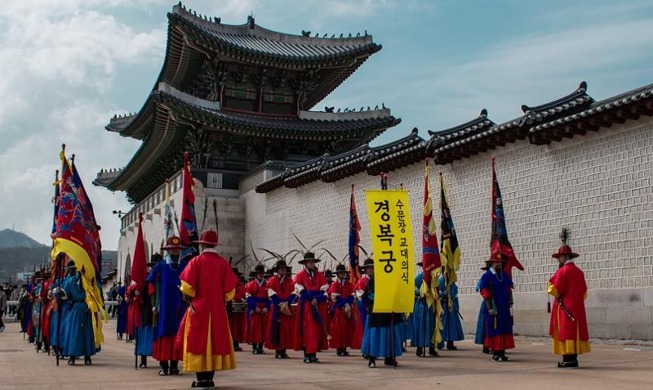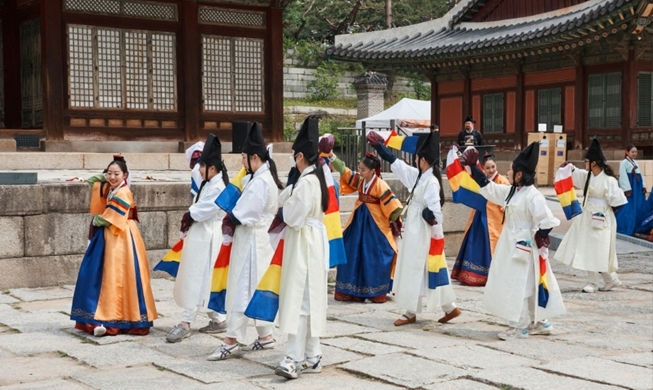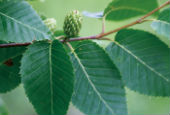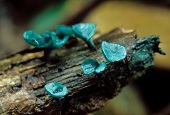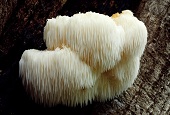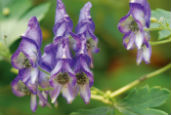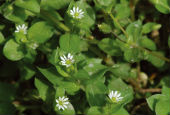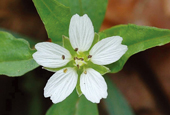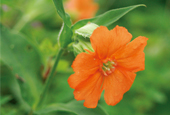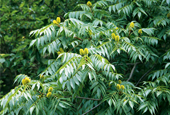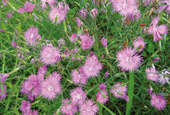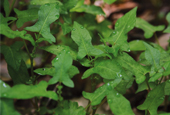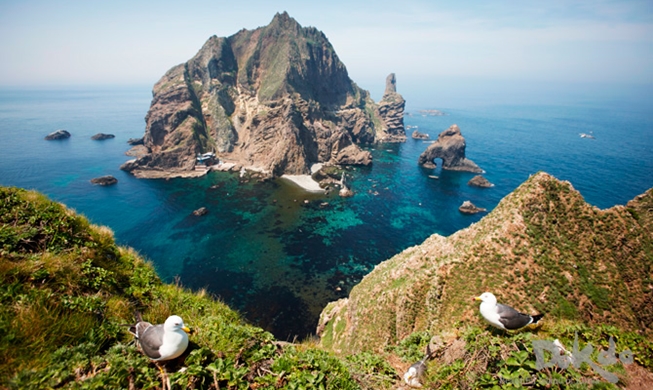-
 Korea.net's 24-hour YouTube channel
Korea.net's 24-hour YouTube channel- NEWS FOCUS
- ABOUT KOREA
- EVENTS
- RESOURCES
- GOVERNMENT
- ABOUT US
View this article in another language
- 한국어
- English
- 日本語
- 中文
- العربية
- Español
- Français
- Deutsch
- Pусский
- Tiếng Việt
- Indonesian
Flora & Fauna of Korea #23
Korea.net publishes a series of articles, “Nature You Meet in the Mountains,” about the peninsula’s mushrooms, insects, trees and herbs & flowers.
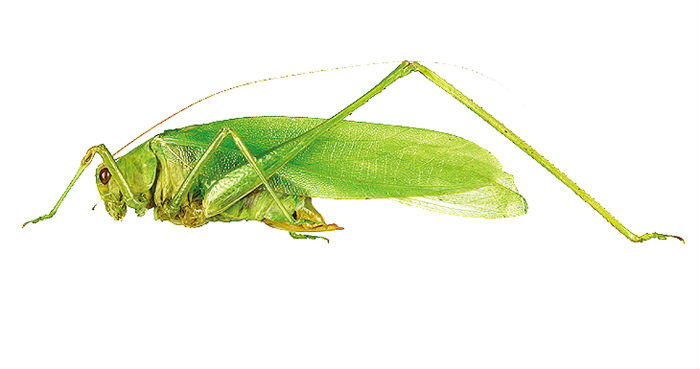
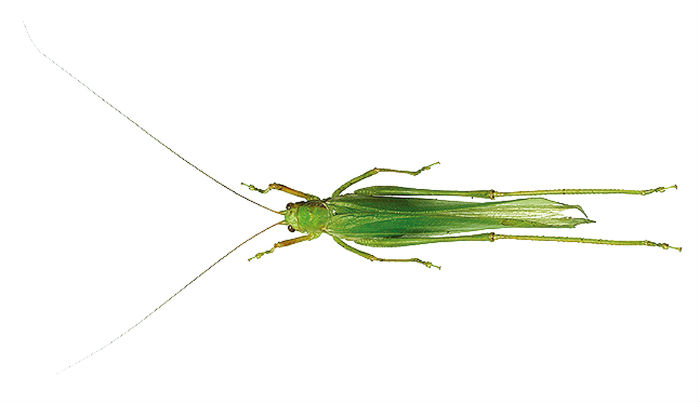 Insects
Insects
Name: 날베짱이, Nalbejjangi
Scientific name: Holochlora longifissa Matsumura et Shiraki
Distribution: Korea, China, Japan
This grasshopper is about 45 to 55 millimeters long. It is basically green, but the tegmina along the coastal vein is white and the outer rim is black. The knuckle of the anterior thigh is red. The thorns on the ventral surface are black. The ovipositor itself is brown, but the edge is black. It looks similar to the Bejjangibuti (Holochlora japonica), but can be distinguished by the red knuckle of the anterior thigh.
Ecology: Adults can be observed from July to October. They live in and feed on grass, normally around small trees along mountain trails. They are active during the daytime and gather around lights at night. Males make a short, low sound.
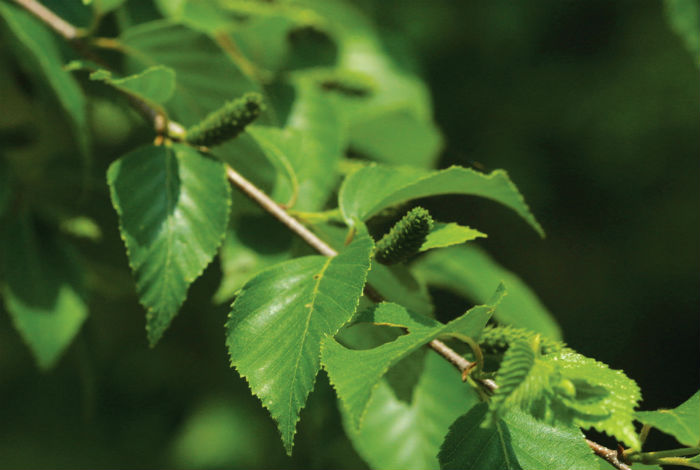
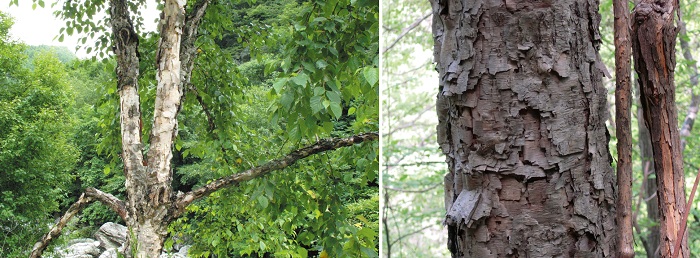
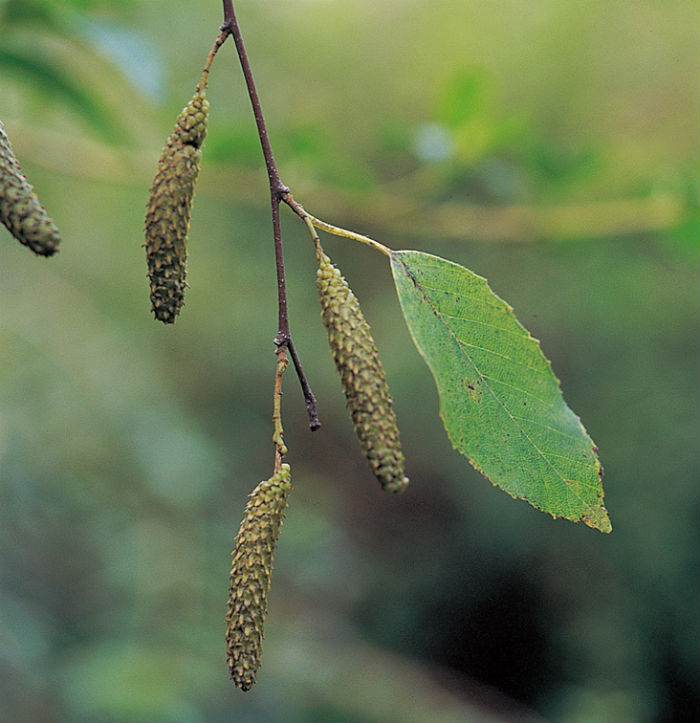
Trees
Name: 물박달나무, Mulbakdalnamu
Scientific name: Betula davurica Pall.
Type: deciduous broadleaf shrub
Blooming season: May
Bearing season: September
Distribution: southern regions of Gyeonggi-do
Better known as the Asian black birch, this tree grows to a height of 20 meters and can get to 40 centimeters in diameter. The bark is grayish brown or just gray, with some pellucid dots. The leaves are alternating, ovate and have irregular, double serrated margins. Fine hairs can be found along the vein on the underside of the leaves. Some monoecious flowers are contained in drooping male catkins and upright female catkins. The flowers are followed by cones containing small, winged seeds. When they mature and turn reddish brown, they fall to the ground.
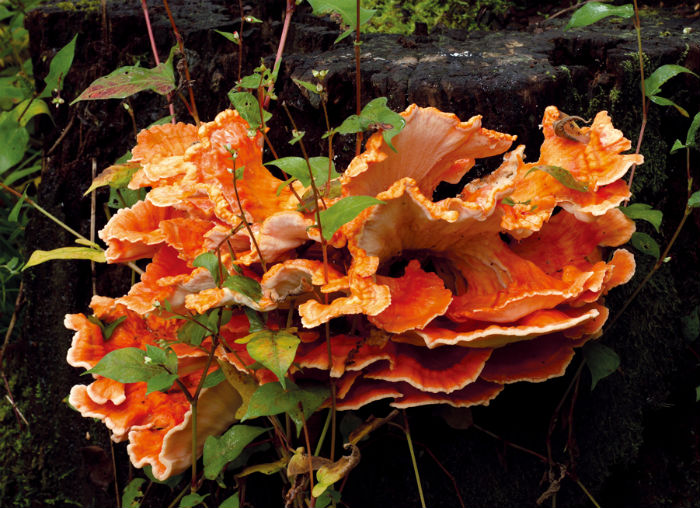
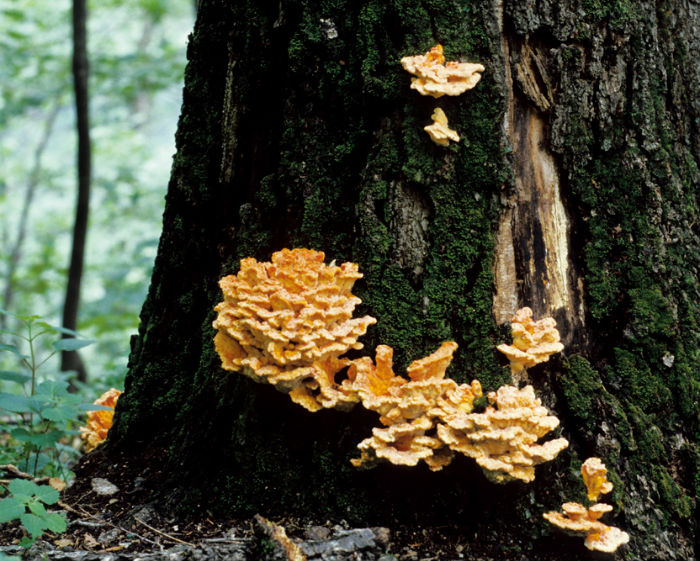
Mushrooms
Name: 덕다리버섯, Deokdari beoseot
Scientific name: Laetiporus sulphureus (Bull.) Murrill
Type: saprophile spore
Print: white
Edible when young
This bracket fungus develops on mature or dead conifers. It causes brown cubical rot in the heartwood of the trees on which it grows. The cap is about 15 to 30 centimeters wide and about 1 to 3 centimeters thick. With age, it becomes wider, shaped like a fan, and adopts a shelf-like appearance. It is yellow, or golden yellow, and fades to white or tan. The cap is knob-shaped and is overlapping in an irregular pattern. The mushroom is edible when young, but it becomes solid with the passage of time. The fertile surface is sulphur-yellow with small tubes or pores, less than 5 millimeters around. It can be distinguished from similar specimens by its cap color.
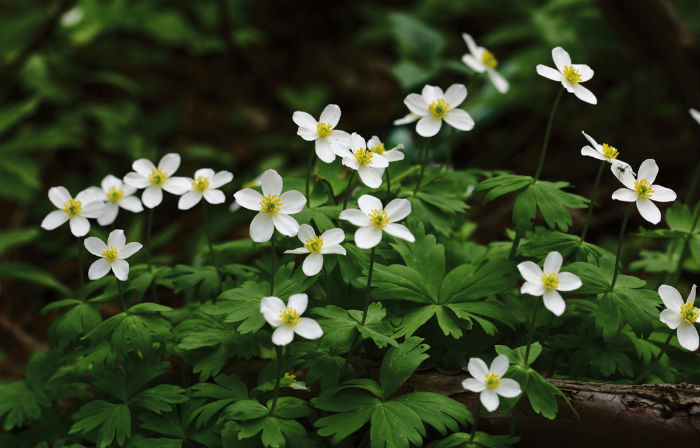
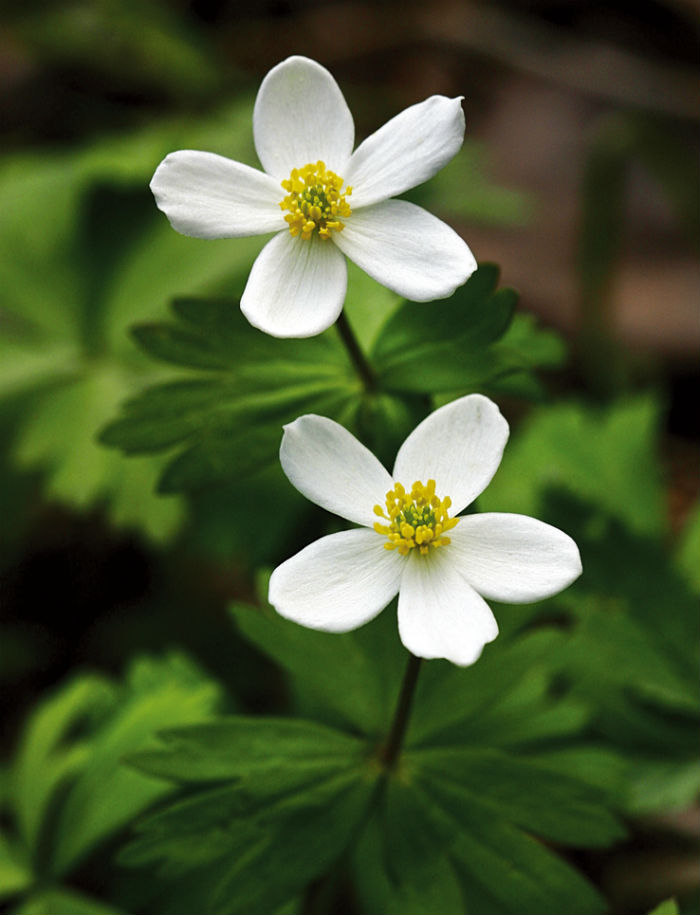
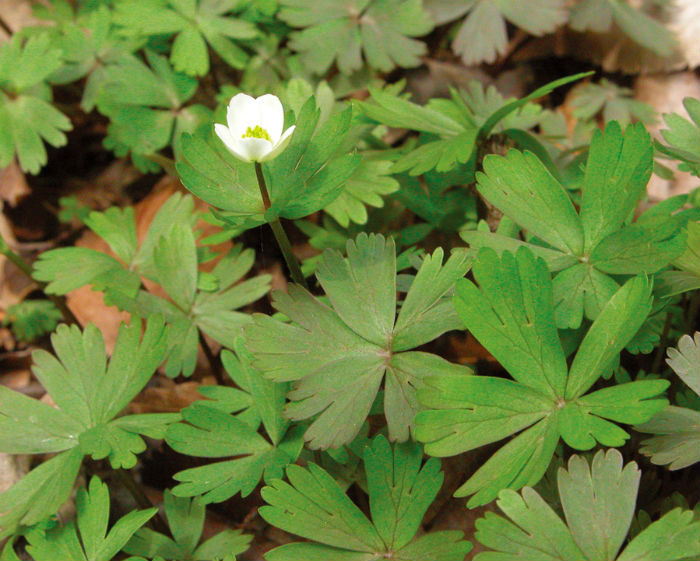
Herbs & Flowers
Name: 홀아비바람꽃, Holabi baramggot
Scientific name: Anemone koraiensis Nakai
Bearing season: April to May
Distribution: Gangwon-do
This perennial grows in wet areas along the mountainside. The root stocks stretch sideways. The leaves grow from the root, with each leaf separated into five parts, like a hand. A fuzz can be found along the edge and along the surface. The flower stalk gives bloom to a single flower at a time. The flower is white and is about 15 millimeters in diameter. It bears akene fruit.
These flowers are only found on the Korean Peninsula.
*This series of article about Korea’s insects, trees, mushrooms and herbs & flowers has been made possible through the cooperation of the Korea National Arboretum.
Korea.net publishes a series of articles, “Nature You Meet in the Mountains,” about the peninsula’s mushrooms, insects, trees and herbs & flowers.


Name: 날베짱이, Nalbejjangi
Scientific name: Holochlora longifissa Matsumura et Shiraki
Distribution: Korea, China, Japan
This grasshopper is about 45 to 55 millimeters long. It is basically green, but the tegmina along the coastal vein is white and the outer rim is black. The knuckle of the anterior thigh is red. The thorns on the ventral surface are black. The ovipositor itself is brown, but the edge is black. It looks similar to the Bejjangibuti (Holochlora japonica), but can be distinguished by the red knuckle of the anterior thigh.
Ecology: Adults can be observed from July to October. They live in and feed on grass, normally around small trees along mountain trails. They are active during the daytime and gather around lights at night. Males make a short, low sound.



Trees
Name: 물박달나무, Mulbakdalnamu
Scientific name: Betula davurica Pall.
Type: deciduous broadleaf shrub
Blooming season: May
Bearing season: September
Distribution: southern regions of Gyeonggi-do
Better known as the Asian black birch, this tree grows to a height of 20 meters and can get to 40 centimeters in diameter. The bark is grayish brown or just gray, with some pellucid dots. The leaves are alternating, ovate and have irregular, double serrated margins. Fine hairs can be found along the vein on the underside of the leaves. Some monoecious flowers are contained in drooping male catkins and upright female catkins. The flowers are followed by cones containing small, winged seeds. When they mature and turn reddish brown, they fall to the ground.


Mushrooms
Name: 덕다리버섯, Deokdari beoseot
Scientific name: Laetiporus sulphureus (Bull.) Murrill
Type: saprophile spore
Print: white
Edible when young
This bracket fungus develops on mature or dead conifers. It causes brown cubical rot in the heartwood of the trees on which it grows. The cap is about 15 to 30 centimeters wide and about 1 to 3 centimeters thick. With age, it becomes wider, shaped like a fan, and adopts a shelf-like appearance. It is yellow, or golden yellow, and fades to white or tan. The cap is knob-shaped and is overlapping in an irregular pattern. The mushroom is edible when young, but it becomes solid with the passage of time. The fertile surface is sulphur-yellow with small tubes or pores, less than 5 millimeters around. It can be distinguished from similar specimens by its cap color.



Herbs & Flowers
Name: 홀아비바람꽃, Holabi baramggot
Scientific name: Anemone koraiensis Nakai
Bearing season: April to May
Distribution: Gangwon-do
This perennial grows in wet areas along the mountainside. The root stocks stretch sideways. The leaves grow from the root, with each leaf separated into five parts, like a hand. A fuzz can be found along the edge and along the surface. The flower stalk gives bloom to a single flower at a time. The flower is white and is about 15 millimeters in diameter. It bears akene fruit.
These flowers are only found on the Korean Peninsula.
*This series of article about Korea’s insects, trees, mushrooms and herbs & flowers has been made possible through the cooperation of the Korea National Arboretum.




